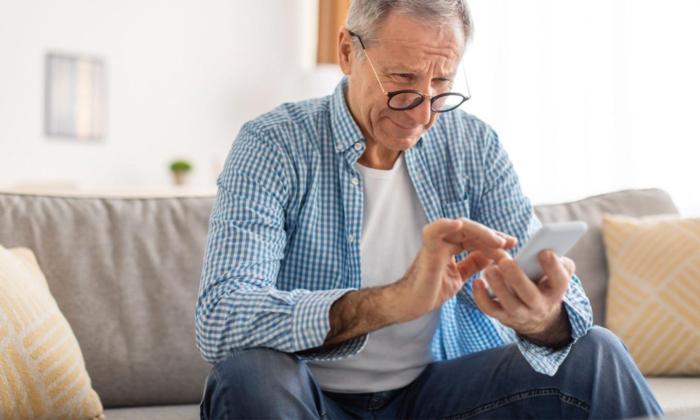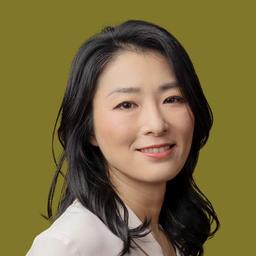Farsightedness is a natural aging phenomenon—and can be an inconvenience to one’s daily life. Also known as presbyopia, its onset begins around the age of 40 for many people. Are there ways to prevent the condition?
Self-Assessment Metrics of Your Eye Health
1. Difficulty seeing clearly when reading at close range and the need to move a certain distance away to see clearly. 2. It takes time to focus when switching between far and near views. 3. Need to take off glasses when talking at close range. 4. Poor night vision. 5. Severe eye fatigue.In an interview with The Epoch Times, 58-year-old Wu Hongqian, director of Yisheng Traditional Chinese Medicine Clinic in Taiwan, said that he has neither myopia (nearsightedness) nor presbyopia due to three simple practices.
1. Diet Therapy
Mr. Wu said that the first key to avoiding presbyopia is diet therapy. For many, indulging more than ten hours a day on 3C products (computer, communication, and consumer electronic products) is not uncommon and can cause minor inflammation in the eyes. When the eyes are in a state of persistent inflammation, vision will deteriorate, resulting in presbyopia.In terms of diet, Western medicine focuses on supplementing lutein, carotene, zeaxanthin, or anthocyanins, and recommends eating more carrots, blueberries, and bilberries. These nutrients all have antioxidant and anti-inflammatory benefits, can assist in eliminating free radicals, and delay aging. Free radicals are the prime factors that cause aging of the human body.
TCM believes that “the liver opens into the eyes,” and “the kidneys govern the pupils,” which means that eye problems are closely related to the health of the liver and kidneys. Accordingly, the focus is on choosing foods or herbs that can nourish the liver and kidneys, such as wolfberry (also known as goji berry), cassia seeds, Tribulus terrestris (a fruit-producing Mediterranean plant), and horsetail (Equisetum hyemale).
Mr. Wu said it may seem that on the surface, TCM has a different approach to eye protection from that of Western nutrition theory, but modern-day medicine has discovered 53 kinds of polyphenols in wolfberry—a superfood for eye care in TCM. Wolfberries have powerful antioxidant function, can fight free radicals, and have anti-inflammation and anti-aging properties, consistent with the findings of Western medicine.
Tea for Good Eyesight
Ingredients: 15g (0.5 ounce) wolfberry, 10g (0.35 ounce) longan, 10g (0.35 ounce) astragalus2. Massage
There are many acupoints around the eyes:
- Cuanzhu (BL2) and Yuyao (EX-HN4) on the brow bone.
- Sizhukong (SJ23); next to the eyes.
- Chengqi (ST1) under the eyes.
- Tongziliao (GB1) at the end of the eyes.
- Qingming (BL1) at the head of the eye.
- Yangbai (GB14) and Sibai (ST2) above and below the eye.
1. Place four fingers on the brow bone, and do a rotating massage. This could be clockwise or counterclockwise. In that case, you reach the Cuanzhu, Yuyao, and Yangbai acupoints at the same time, which can relieve dry eyes and fatigue.
2. Place four fingers to rotate and massage the edge of the lower brow bone, which is the acupoint of the subframe nerve, including Sibai and Chengqi. It promotes blood circulation around the eyes and removes eye sacs and dark rings under the eyes.
3. Place three fingers onto the concave socket around the eye bone, and apply rotary massage to the Sizhukong and Tongziliao acupoints, which can help supply blood to the eyeballs. Here you have the lacrimal glands distributed around, so is ideal for treating cataracts, floaters, and dry eyes.
4. Massage the Qingming acupoint at the inner corner of the eyes with two index fingers. Mr. Wu said that the Qingming is his beloved acupoint for treating dry eye syndrome. As more youth use 3C products for longer periods, dry eye syndrome is likely to start at a younger age. Therefore, learning to massage this acupoint earlier can help reduce eye damage.

3. Eye Exercises
Eyeball movement exercising the six muscles in the eyes is the third practice to prevent presbyopia. Through proper training, blood supply to the eyes can become more sufficient, and it also prevents premature aging of the ciliary muscles. These movements are like training your biceps with dumbbells every day to build healthy, strong arms.Rotations
- Look up, down, left, and right for 3–5 seconds each direction. Then slowly rotate the eyes three times clockwise then counterclockwise. Try to stretch the eyeballs to reach all far corners.
Follow a Pen
To train the eyeballs for distance and near vision exercises, you can use a pen as a baton.- Start from the center near the tip of your nose, keep your eyes on the tip of the pen, slowly push the pen from near to far, and then pull it back to the tip of your nose from the far end, back and forth 3-5 times.
- If you have time, you can follow the strokes of the Chinese character for rice “米,” to the right, to the left, up, down, up to the right, down to the left, up to the left, and finally down to the right, moving the pen to the far end and then pulling it back to the tip of the nose. Repeat this exercise 3-5 times.
Mr. Wu said that this set of exercises works best for people who have just started to see the onset of presbyopia (within half a year). If they have had presbyopia for 1–2 years already, it may take more than 6 months to recover. For those with presbyopia of more than two years, the effect is less obvious.






